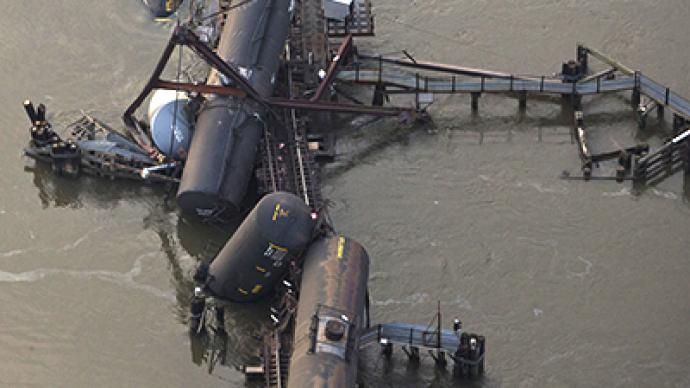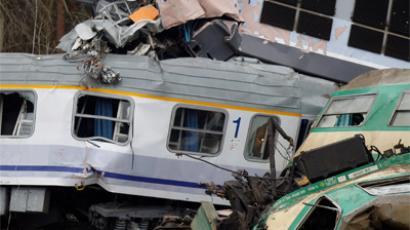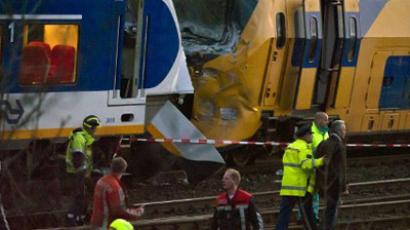Investigation, cleanup of hazardous chemicals on hold after NJ bridge collapse

A New Jersey bridge that collapsed after a train derailed is awaiting cleanup and investigation, just three years after the structure’s first collapse. Officials are determining the best way to remove hazardous chemicals still inside the tanker cars.
Environmental experts, train company officials and their contractors are deciding the best way to remove the harmful substances, which are now in a solid state. The Friday accident sent four tanker cars into a creek and spewed hazardous gas into the air in Paulsboro, New Jersey, sickening dozens of people. A Friday reading showed high levels of vinyl chloride in the air, prompting authorities to evacuate several hundred residents. More than 70 people were sent to the hospital with breathing problems.“[We’re] not certain if the bridge failed or the track failed, but obviously something failed,” state Assemblyman John Burzichelli said in a statement.Local authorities told AP that the job of lifting the tanker cars is so intense that no cranes in the Philadelphia area were strong enough to handle it. A stronger crane is being floated in by barge from New York Harbor. Once the crane arrives, the operation must be very careful to avoid any further ruptures to derailed cars. It’s not the first time the Paulsboro rail bridge has collapsed – the same structure gave way just three years ago. The accident forced a train pulling coal cars off its tracks and sent 16 cars into the water. The bridge was rebuilt in 2009, but a professor of structural engineering at Rowan University, Dr. Ralph Dusseau, says it’s uncommon for such bridges to collapse on their own unless they have structural flaws.“It sounds like that bridge needs to be replaced with something not moveable. Two collapses in that amount of time is a problem,” he told CourierPostOnline.comThe Federal Railroad Administration’s (FRA) last inspection of the bridge was conducted in January 2010. Inspectors reported there were “no defects noted,” according to FRA documents provided to the South Jersey Times. It remains unclear what caused the 83-car train to derail. Members of the National Transportation Safety Board (NTSB) are aiming to determine whether the accident was caused by a fault with the bridge, or if the derailment is to blame for the bridge’s collapse.














